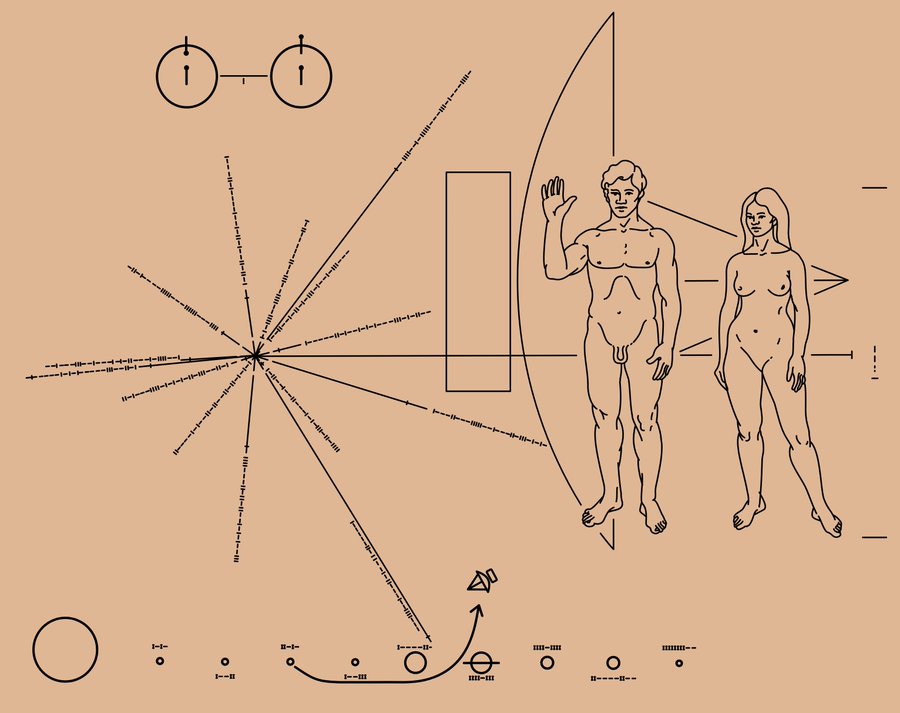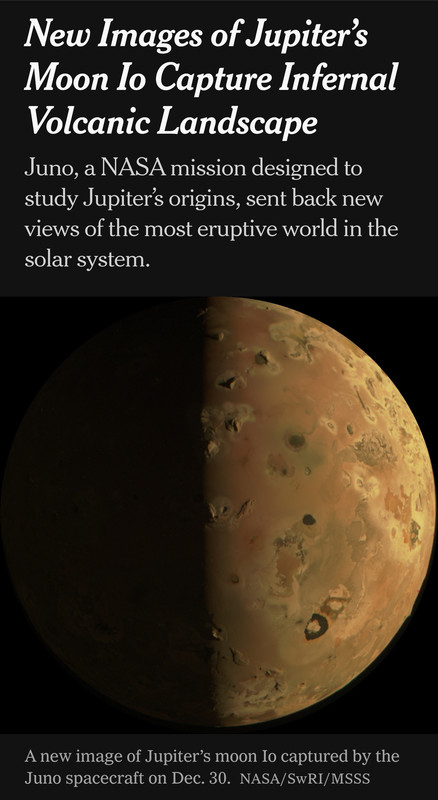You are using an out of date browser. It may not display this or other websites correctly.
You should upgrade or use an alternative browser.
You should upgrade or use an alternative browser.
I just saw the moon
- Thread starter TheMadDabber
- Start date
CrazyDiamond
Spirit of the Dark Horse
The high altitude and dry air of the Chajnantor plateau give the Atacama Large Millimeter/submillimeter Array (ALMA), operated by ESO and its international partners, an optimal window to study the cold dark universe. In this striking picture, the rolling, rusty and barren landscape of the plateau feels more like an alien world, rather than our own planet.
Thankfully, a familiar friend brings us back to Earth — the full Moon rising at sunset. Over the different lunar phases, the moon rises and sets at different times, while over the course of the year, it rises and sets in different locations on the horizon. Set against the horizon during its rise, the moon often seems to loom larger than usual. But this is only a trick on your eyes due to a famed optical illusion.
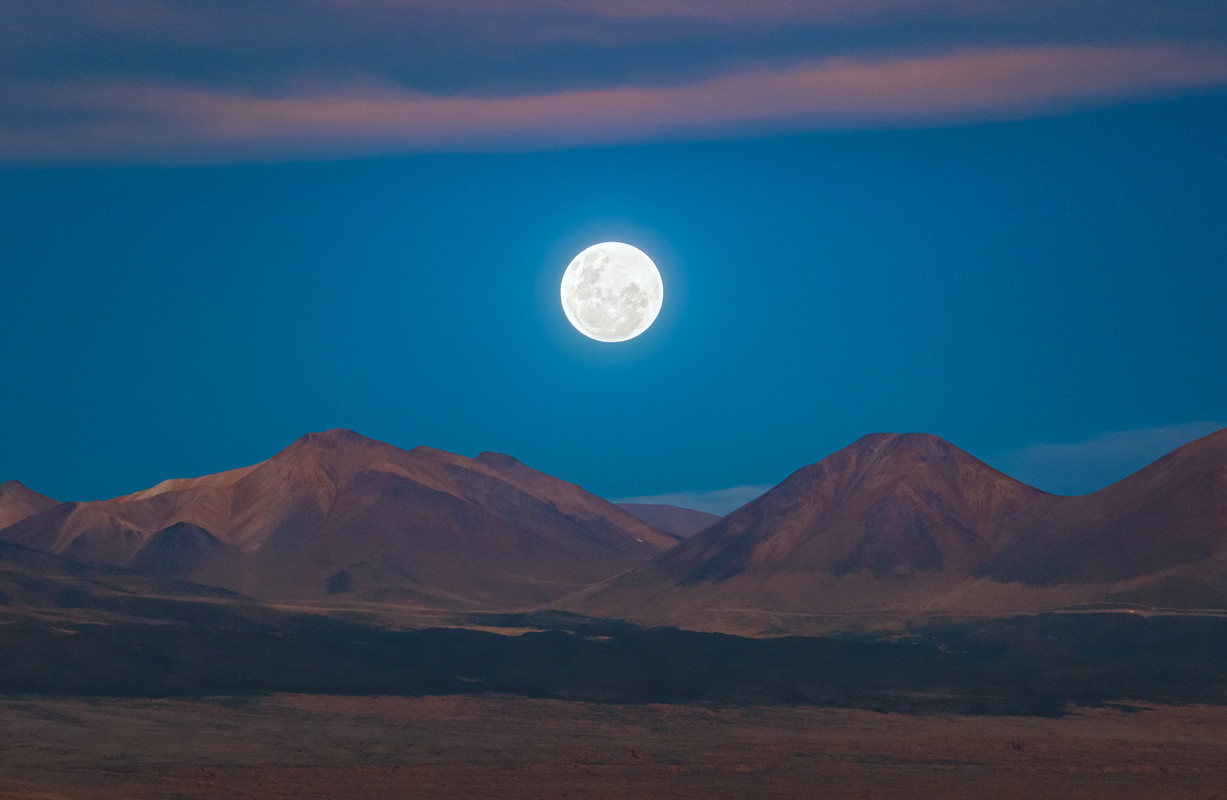
Like a ship plowing through cosmic seas, runaway star Zeta Ophiuchi produces the arcing interstellar bow wave or bow shock seen in this stunning infrared portrait. In the false-color view, bluish Zeta Oph, a star about 20 times more massive than the Sun, lies near the center of the frame, moving toward the left at 24 kilometers per second. Its strong stellar wind precedes it, compressing and heating the dusty interstellar material and shaping the curved shock front. What set this star in motion? Zeta Oph was likely once a member of a binary star system, its companion star was more massive and hence shorter lived. When the companion exploded as a supernova catastrophically losing mass, Zeta Oph was flung out of the system. About 460 light-years away, Zeta Oph is 65,000 times more luminous than the Sun and would be one of the brighter stars in the sky if it weren't surrounded by obscuring dust. The image spans about 1.5 degrees or 12 light-years at the estimated distance of Zeta Ophiuchi. In January 2020, NASA placed the Spitzer Space Telescope in safe mode, ending its 16 successful years of exploring the cosmos.
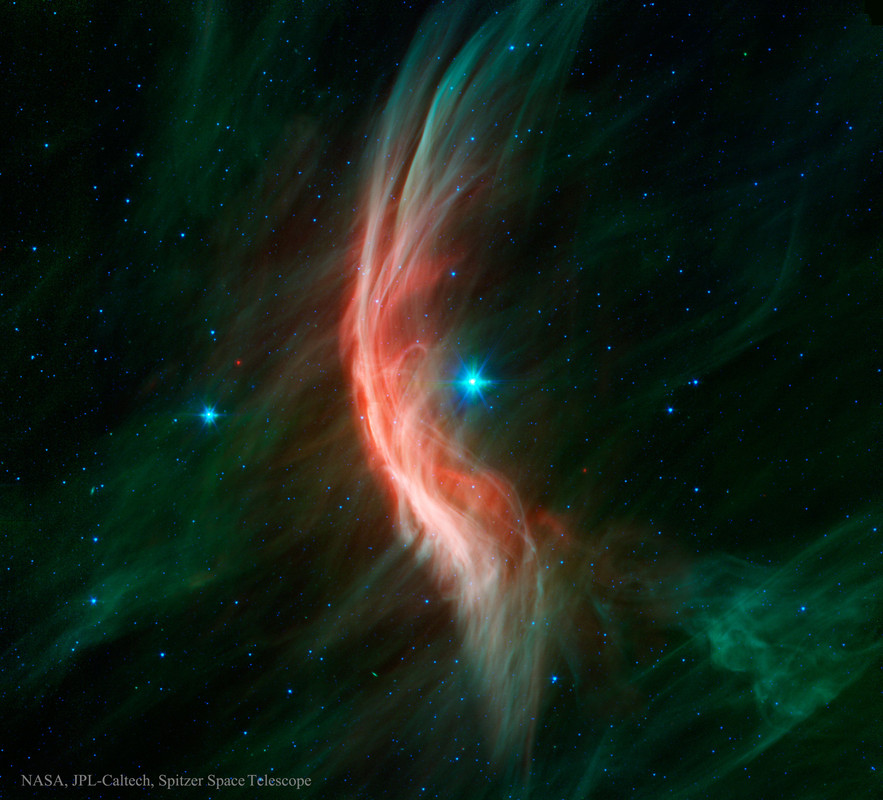
This colorful skyscape spans about three full moons across nebula rich starfields along the plane of our Milky Way Galaxy toward the royal northern constellation Cepheus. Near the edge of the region's massive molecular cloud some 2,400 light-years away, bright reddish emission region Sharpless (Sh)2-155 is at the center of the frame, also known as the Cave Nebula. About 10 light-years across the cosmic cave's bright walls of gas are ionized by ultraviolet light from the hot young stars around it. Dusty bluish reflection nebulae, like vdB 155 at the left, and dense obscuring clouds of dust also abound on the interstellar canvas. Astronomical explorations have revealed other dramatic signs of star formation, including the bright reddish fleck of Herbig-Haro (HH) 168. At the upper left in the frame, the Herbig-Haro object emission is generated by energetic jets from a newborn star.
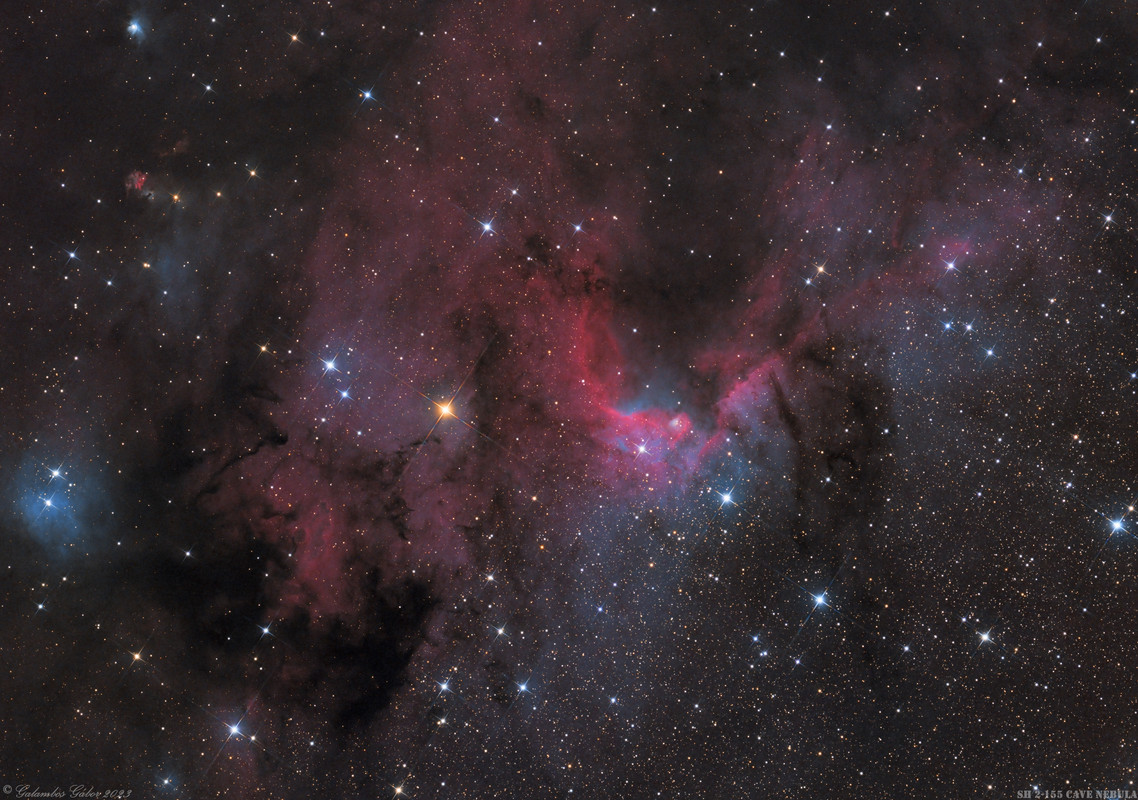
Sometimes, it's the stars that are the hardest to see that are the most interesting. IC 348 is a young star cluster that illuminates surrounding filamentary dust. The stringy and winding dust appears pink in this recently released infrared image from the Webb Space Telescope. In visible light, this dust reflects mostly blue light, giving the surrounding material the familiar blue hue of a reflection nebula. Besides bright stars, several cool objects have been located in IC 348, visible because they glow brighter in infrared light. These objects are hypothesized to be low mass brown dwarfs. Evidence for this includes the detection of an unidentified atmospheric chemical, likely a hydrocarbon, seen previously in the atmosphere of Saturn. These objects appear to have masses slightly greater than known planets, only a few times greater than Jupiter. Together, these indicate that this young star cluster contains something noteworthy -- young planet-mass brown dwarfs that float free, not orbiting any other star.
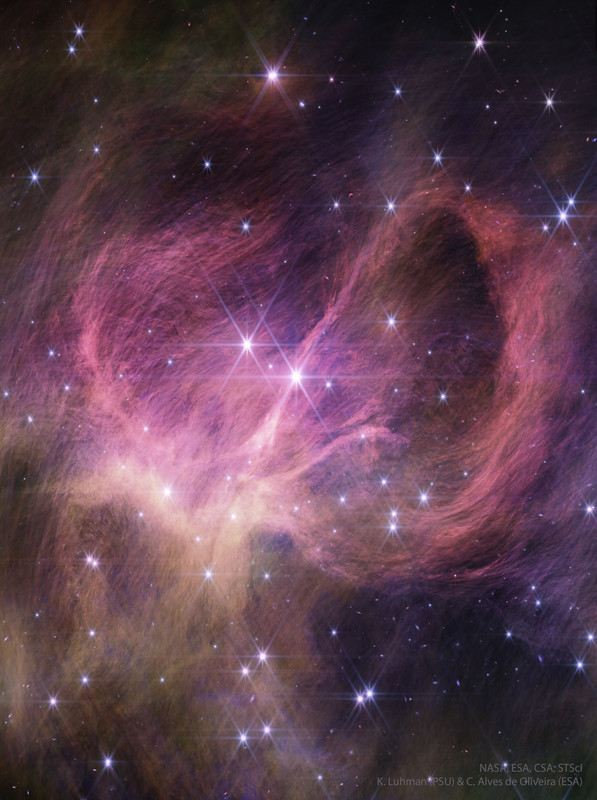
This is image is little over 12MB, good wallpaper...
The Vela constellation is visible with the naked eye in the southern sky, but you might miss a lot of details hidden there, like those shown in this image. This is a small patch of the Vela supernova remnant, the intricate leftovers of the explosion of a massive star 11,000 years ago. This image is part of a huge and detailed mosaic captured with the VLT Survey Telescope (VST), hosted at ESO’s Paranal Observatory in the Chilean desert.
Pink and orange filamentary clouds swarm around in this picture, resembling the ghostly shadow of a cosmic bird with wide orange wings, a long pink body, and a bright pinkish star as an eye. A myriad of stars are sprinkled all over the image.
When massive stars reach the end of their life they explode as a supernova, expelling their outer layers. These explosions send out shock waves that move through the surrounding gas, compressing and reshaping it. This is what creates the intricate structure of filaments seen here, which shine brightly because of the energy released during the explosion.
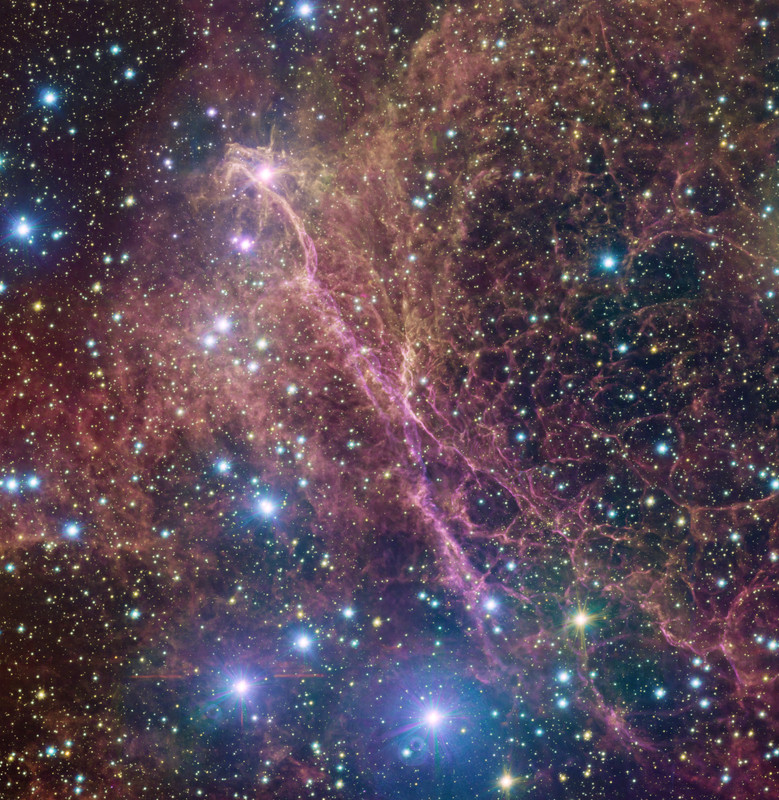
Thankfully, a familiar friend brings us back to Earth — the full Moon rising at sunset. Over the different lunar phases, the moon rises and sets at different times, while over the course of the year, it rises and sets in different locations on the horizon. Set against the horizon during its rise, the moon often seems to loom larger than usual. But this is only a trick on your eyes due to a famed optical illusion.

Like a ship plowing through cosmic seas, runaway star Zeta Ophiuchi produces the arcing interstellar bow wave or bow shock seen in this stunning infrared portrait. In the false-color view, bluish Zeta Oph, a star about 20 times more massive than the Sun, lies near the center of the frame, moving toward the left at 24 kilometers per second. Its strong stellar wind precedes it, compressing and heating the dusty interstellar material and shaping the curved shock front. What set this star in motion? Zeta Oph was likely once a member of a binary star system, its companion star was more massive and hence shorter lived. When the companion exploded as a supernova catastrophically losing mass, Zeta Oph was flung out of the system. About 460 light-years away, Zeta Oph is 65,000 times more luminous than the Sun and would be one of the brighter stars in the sky if it weren't surrounded by obscuring dust. The image spans about 1.5 degrees or 12 light-years at the estimated distance of Zeta Ophiuchi. In January 2020, NASA placed the Spitzer Space Telescope in safe mode, ending its 16 successful years of exploring the cosmos.

This colorful skyscape spans about three full moons across nebula rich starfields along the plane of our Milky Way Galaxy toward the royal northern constellation Cepheus. Near the edge of the region's massive molecular cloud some 2,400 light-years away, bright reddish emission region Sharpless (Sh)2-155 is at the center of the frame, also known as the Cave Nebula. About 10 light-years across the cosmic cave's bright walls of gas are ionized by ultraviolet light from the hot young stars around it. Dusty bluish reflection nebulae, like vdB 155 at the left, and dense obscuring clouds of dust also abound on the interstellar canvas. Astronomical explorations have revealed other dramatic signs of star formation, including the bright reddish fleck of Herbig-Haro (HH) 168. At the upper left in the frame, the Herbig-Haro object emission is generated by energetic jets from a newborn star.

Sometimes, it's the stars that are the hardest to see that are the most interesting. IC 348 is a young star cluster that illuminates surrounding filamentary dust. The stringy and winding dust appears pink in this recently released infrared image from the Webb Space Telescope. In visible light, this dust reflects mostly blue light, giving the surrounding material the familiar blue hue of a reflection nebula. Besides bright stars, several cool objects have been located in IC 348, visible because they glow brighter in infrared light. These objects are hypothesized to be low mass brown dwarfs. Evidence for this includes the detection of an unidentified atmospheric chemical, likely a hydrocarbon, seen previously in the atmosphere of Saturn. These objects appear to have masses slightly greater than known planets, only a few times greater than Jupiter. Together, these indicate that this young star cluster contains something noteworthy -- young planet-mass brown dwarfs that float free, not orbiting any other star.

This is image is little over 12MB, good wallpaper...
The Vela constellation is visible with the naked eye in the southern sky, but you might miss a lot of details hidden there, like those shown in this image. This is a small patch of the Vela supernova remnant, the intricate leftovers of the explosion of a massive star 11,000 years ago. This image is part of a huge and detailed mosaic captured with the VLT Survey Telescope (VST), hosted at ESO’s Paranal Observatory in the Chilean desert.
Pink and orange filamentary clouds swarm around in this picture, resembling the ghostly shadow of a cosmic bird with wide orange wings, a long pink body, and a bright pinkish star as an eye. A myriad of stars are sprinkled all over the image.
When massive stars reach the end of their life they explode as a supernova, expelling their outer layers. These explosions send out shock waves that move through the surrounding gas, compressing and reshaping it. This is what creates the intricate structure of filaments seen here, which shine brightly because of the energy released during the explosion.

florduh
Well-Known Member
cybrguy
Putin is a War Criminal
Okie dokie. Spacex is set to launch 4 European astronauts to the space station in about three hours. Good luck everybody. Hope it gets off today.
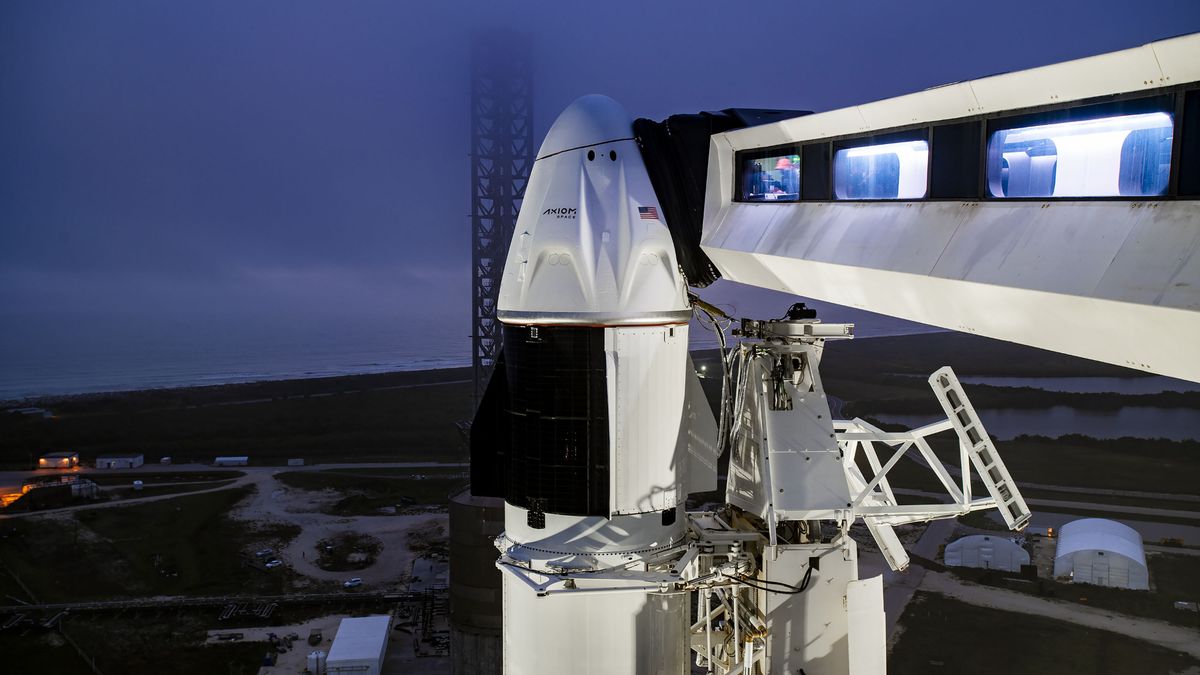
 www.space.com
www.space.com
And tomorrow, Japan is hoping to make their first landing of a craft on the moon. Good luck to them as well.

 www.space.com
www.space.com

What time is the SpaceX Ax-3 astronaut launch for Axiom Space? How to watch it live today
A SpaceX Falcon 9 will launch the four Ax-3 astronauts on Jan. 18 at 4:49 p.m. EST (2149 GMT).
And tomorrow, Japan is hoping to make their first landing of a craft on the moon. Good luck to them as well.

Watch Japan attempt to ace its 1st-ever moon landing today with this free livestream (video)
The nation's SLIM lunar lander will try to touch down at around 10:20 a.m. ET today (Jan. 19).
cybrguy
Putin is a War Criminal
Congratulations to the AX3 crew. They are now ISS residents for the next couple weeks. I have always imagined that zero gravity in an "extended" area like the space station (rather than a capsule) would be incredibly entertaining. And the views, of course, would be incredible. Unless I had stuff to keep me busy, though, two weeks might be a little much.
florduh
Well-Known Member
I have always imagined that zero gravity in an "extended" area like the space station (rather than a capsule) would be incredibly entertaining.
I know I'm getting old because I've been obsessed with space since I was a kid. But I no longer have much interest in actually going to space. For two reasons:
1) we're still using the same, nearly 100 year old, Nazi rocket technology to get into orbit. A (somewhat) controlled explosion to get into space? Made by Elon Musk? No thank you.
2) My digestive system barely works even when there's a fundamental cosmic force making sure everything flows the right way. I can't imagine zero G working out well for me.
Maybe I'll change my mind if we develop some Star Trek breakthrough in propulsion. Or...if space travel is gonna be dominated by billionaire idiots anyway, can't one of them put up the money for a space elevator?
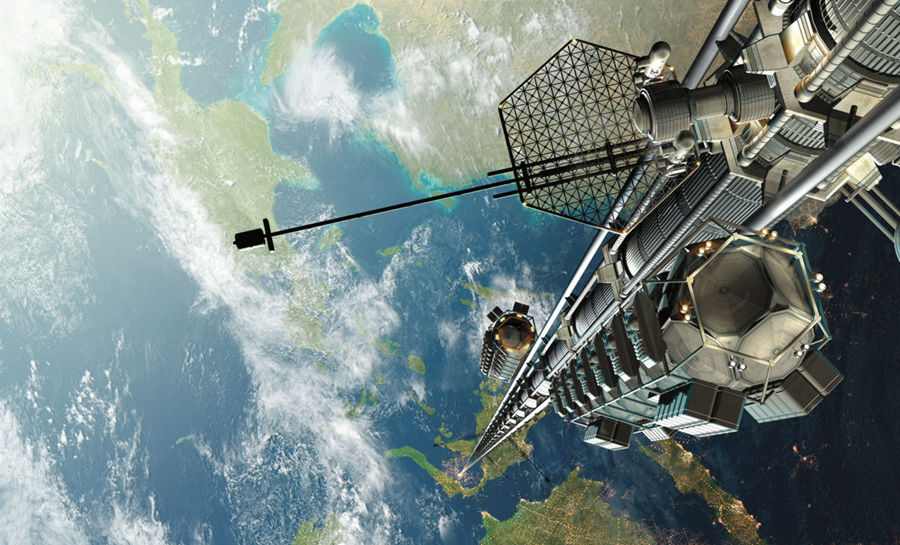

Geomagnetic storm watch issued; northern lights could come to these states
A geomagnetic storm watched has been issued for the next two days by NOAA’s Space Weather Prediction Center.
vapviking
Old & In the Way
Science discovers Fried Egg in space!
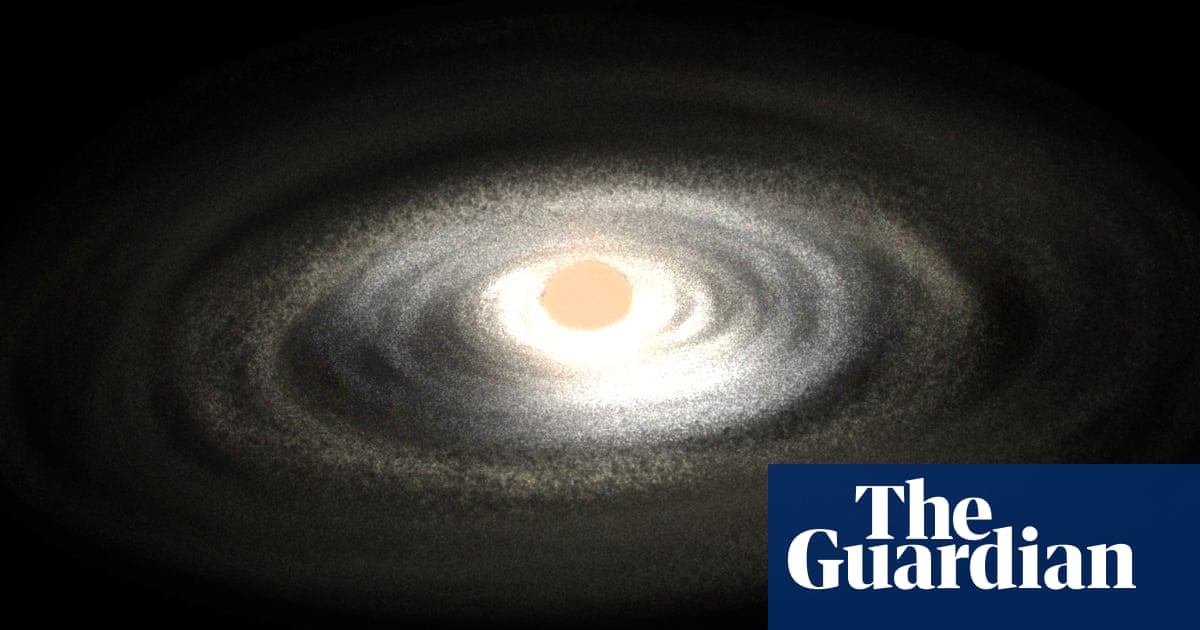
 www.theguardian.com
www.theguardian.com

‘Old smokers’: astronomers discover giant ancient stars in Milky Way
Stars sat fading quietly for years before suddenly puffing out vast clouds of smoke
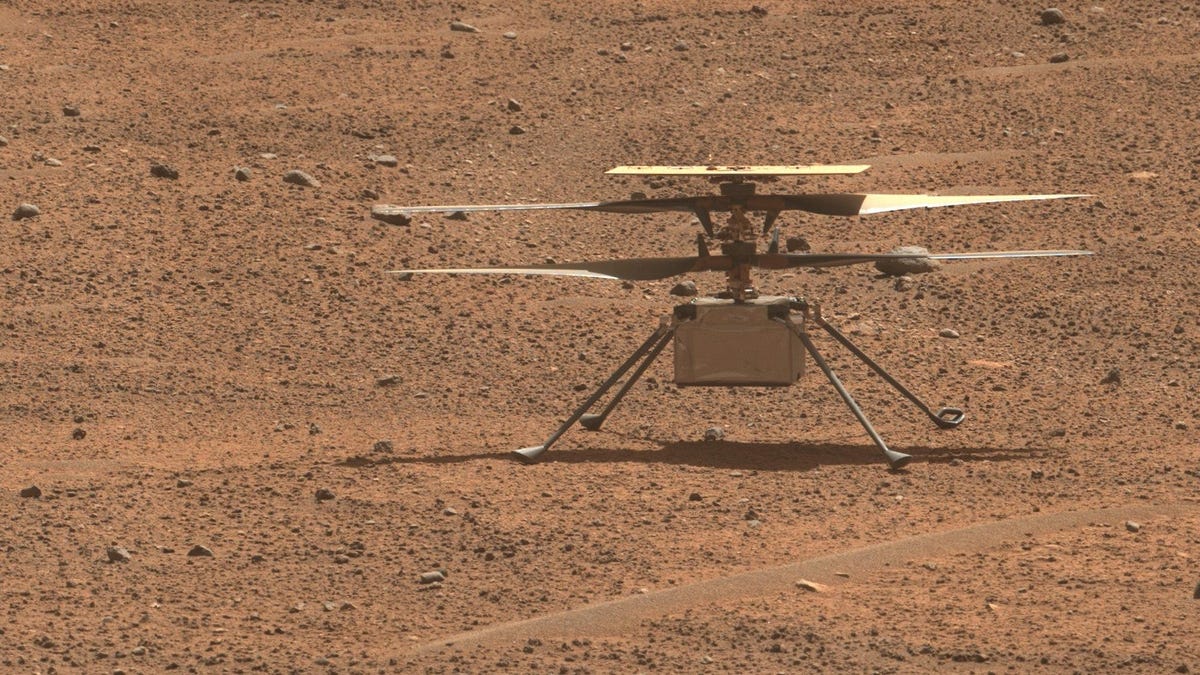
NASA's Mars Helicopter Is Dead, So Pour One Out
One of the Ingenuity's carbon fiber wings has broken, rendering the NASA Mars Helicopter flightless.
 jalopnik.com
jalopnik.com
florduh
Well-Known Member

NASA's Mars Helicopter Is Dead, So Pour One Out
One of the Ingenuity's carbon fiber wings has broken, rendering the NASA Mars Helicopter flightless.jalopnik.com
Aww hell no....Martians are about to find out why Americans don't have Free Healthcare!
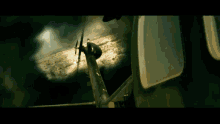
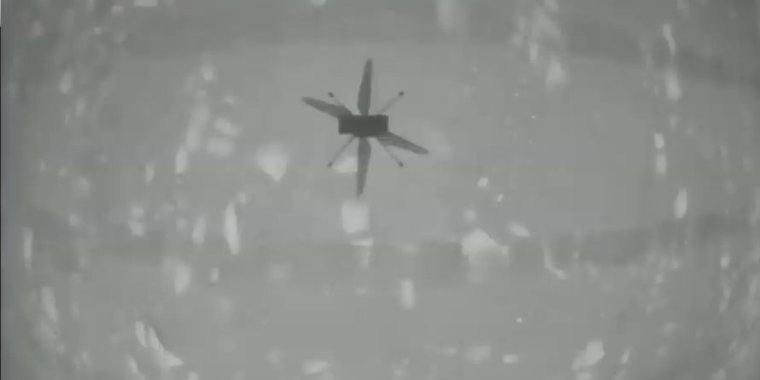
It turns out NASA’s Mars helicopter was much more revolutionary than we knew
Ingenuity packed more computing power than all other NASA deep space missions combined.
coolbreeze
Well-Known Member
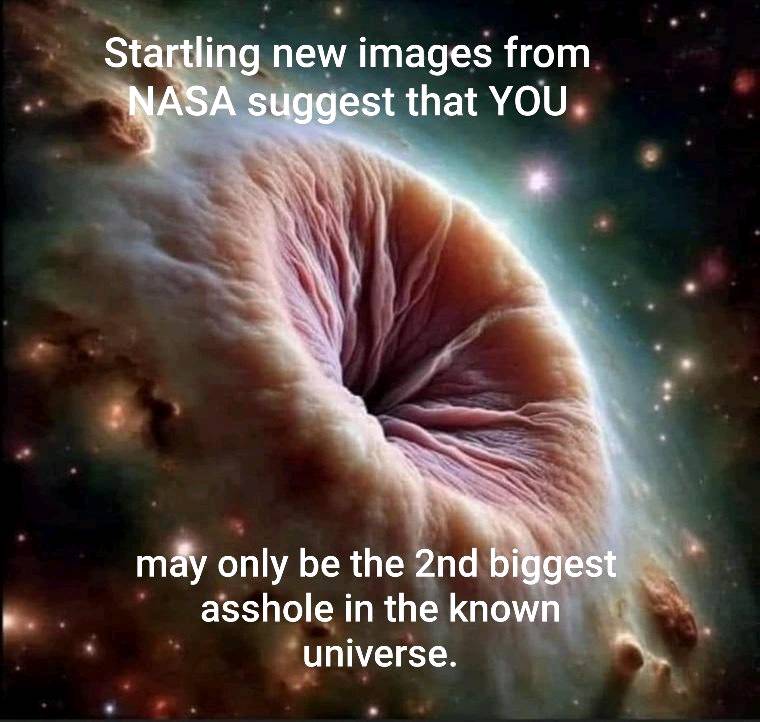
Sent to TFG, of course...

cybrguy
Putin is a War Criminal

Japan's upside-down SLIM moon lander wakes up on lunar surface and snaps new photos
Science is ongoing in Shioli Crater.
NYC_Frank
"A man with no vices is a man with no virtues"
Venus had a moon called Zoozve ???
(a thread)
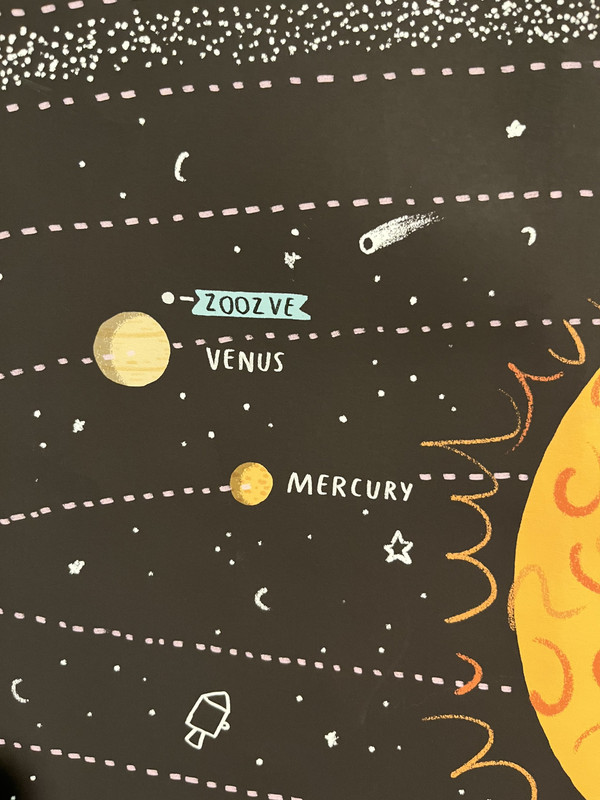
late edit ... sorry, just realized you need an "X" account to see the replies (thread)
(a thread)

late edit ... sorry, just realized you need an "X" account to see the replies (thread)
Last edited:
Astronomers discover strange new type of star hidden in the center of our galaxy
A decade-long survey of the night sky has revealed a mysterious new type of star astronomers are referring to as an “old smoker.”
These previously hidden stellar objects are aging, giant stars located near the heart of the Milky Way galaxy.
coolbreeze
Well-Known Member
Finally, some recognition! Now we no longer have to sit here spinning and off-gassing our super-massive selves without any acknowledgment of our efforts! We're all stars! ; )“old smoker.”
Bologna
(zombie) Woof.
More info on the upcoming "exceptional" "Great American Solar Eclipse":
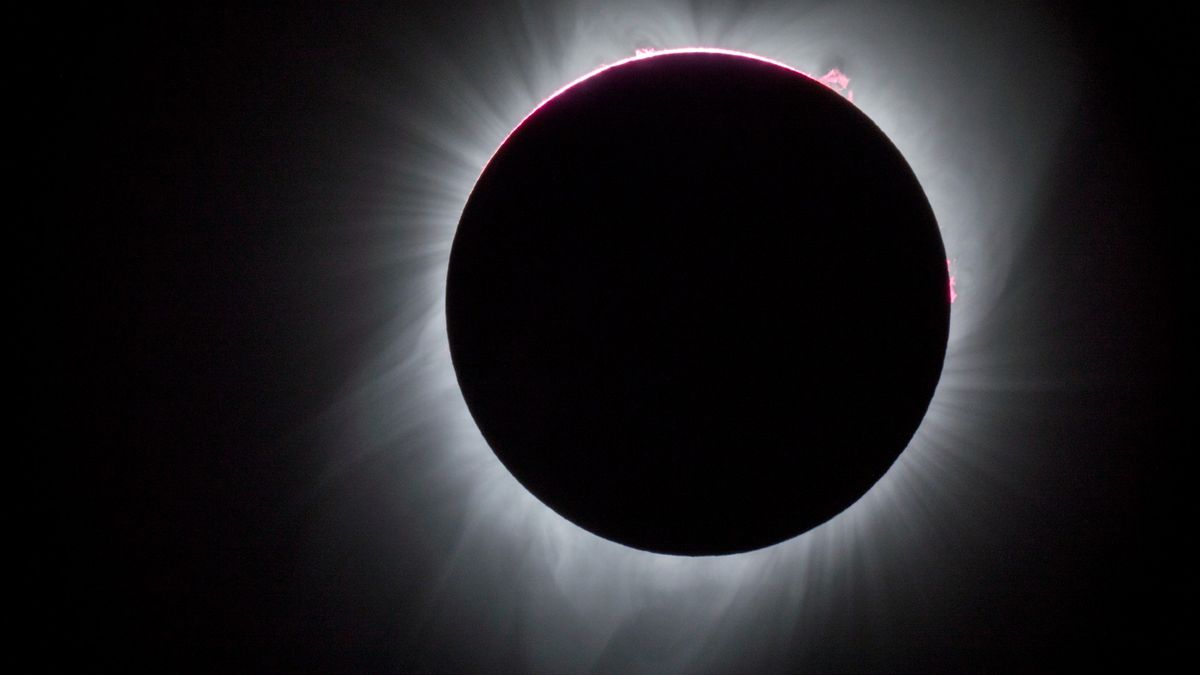
 www.space.com
www.space.com

Total solar eclipse April 8, 2024: The longest and most visible for the US in 100 years
When a total solar eclipse attains a duration of over 4 minutes it certainly should be considered as an exceptional eclipse.
Bologna
(zombie) Woof.
So far, the plan is to camp near Moxie Falls... Hopefully, Indian Pond and some of the other state parks open a weekend early for the Great American Solar Eclipse...! Otherwise, my daughter, her bf and I will be "roughing it" at a self-maintained or private site nearby (close to Millinocket, btw, come Sept!)...


 :
:

 www.instagram.com
Who says pop can't be a fun-GI...?! (
www.instagram.com
Who says pop can't be a fun-GI...?! (
 ...Shhhhh!)
...Shhhhh!)



 :
:
1.5M views · 58K likes | Joanna P. Romero on Instagram: "Head to one of these places between September, October, & November 📍🙌🏼 Make sure to save and share this post for your future travels or to share the info with others! #northernlights #auror
58K likes, 302 comments - joromero2 on January 28, 2024: "Head to one of these places between September, October, & November 📍🙌🏼 Make sure to save and share this post for your future t...".
 www.instagram.com
www.instagram.com

 ...Shhhhh!)
...Shhhhh!)
Last edited:
cybrguy
Putin is a War Criminal
I get that the solar eclipse is completely predictable, but I'm confused about the northern lights. Does a solar eclipse somehow magnify the Northern Lights? I've always been under the impression that the northern lights were created by coronal ejections and how they interact with our magnetosphere. I suppose I'll have to look it up...
Does Dr @CrazyDiamond have any comments here?
Does Dr @CrazyDiamond have any comments here?

Bologna
(zombie) Woof.
Yes, predictable, as are coronal ejections... which is why sept, oct and nov is prime viewing at the sites listed (note: NOT during the solar eclipse in April...I get that the solar eclipse is completely predictable, but I'm confused about the northern lights. Does a solar eclipse somehow magnify the Northern Lights? I've always been under the impression that the northern lights were created by coronal ejections and how they interact with our magnetosphere. I suppose I'll have to look it up...
Does Dr @CrazyDiamond have any comments here?

